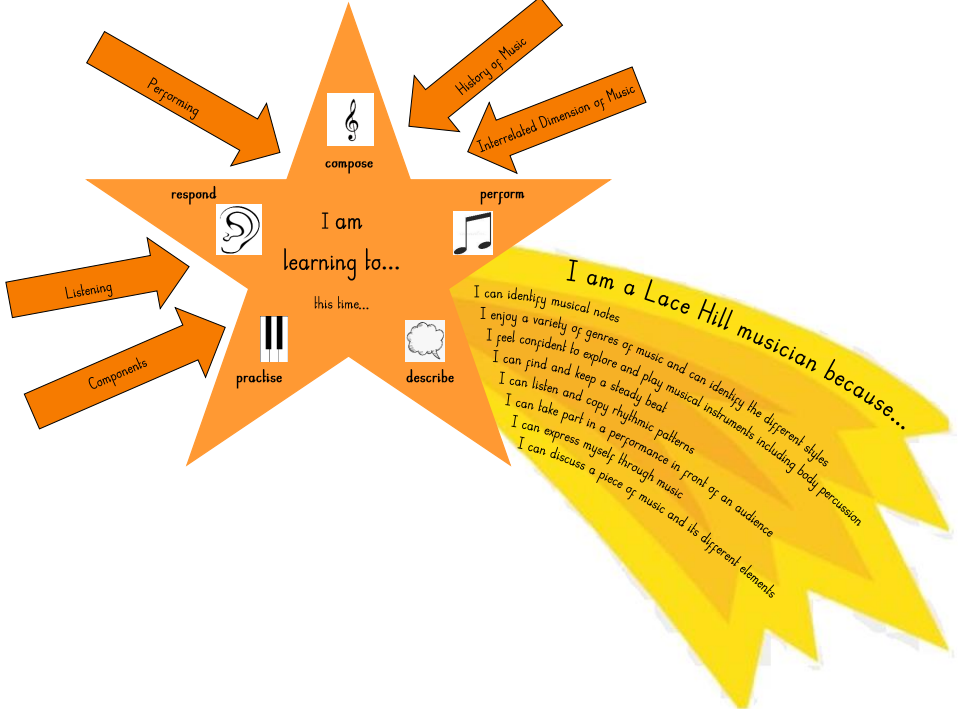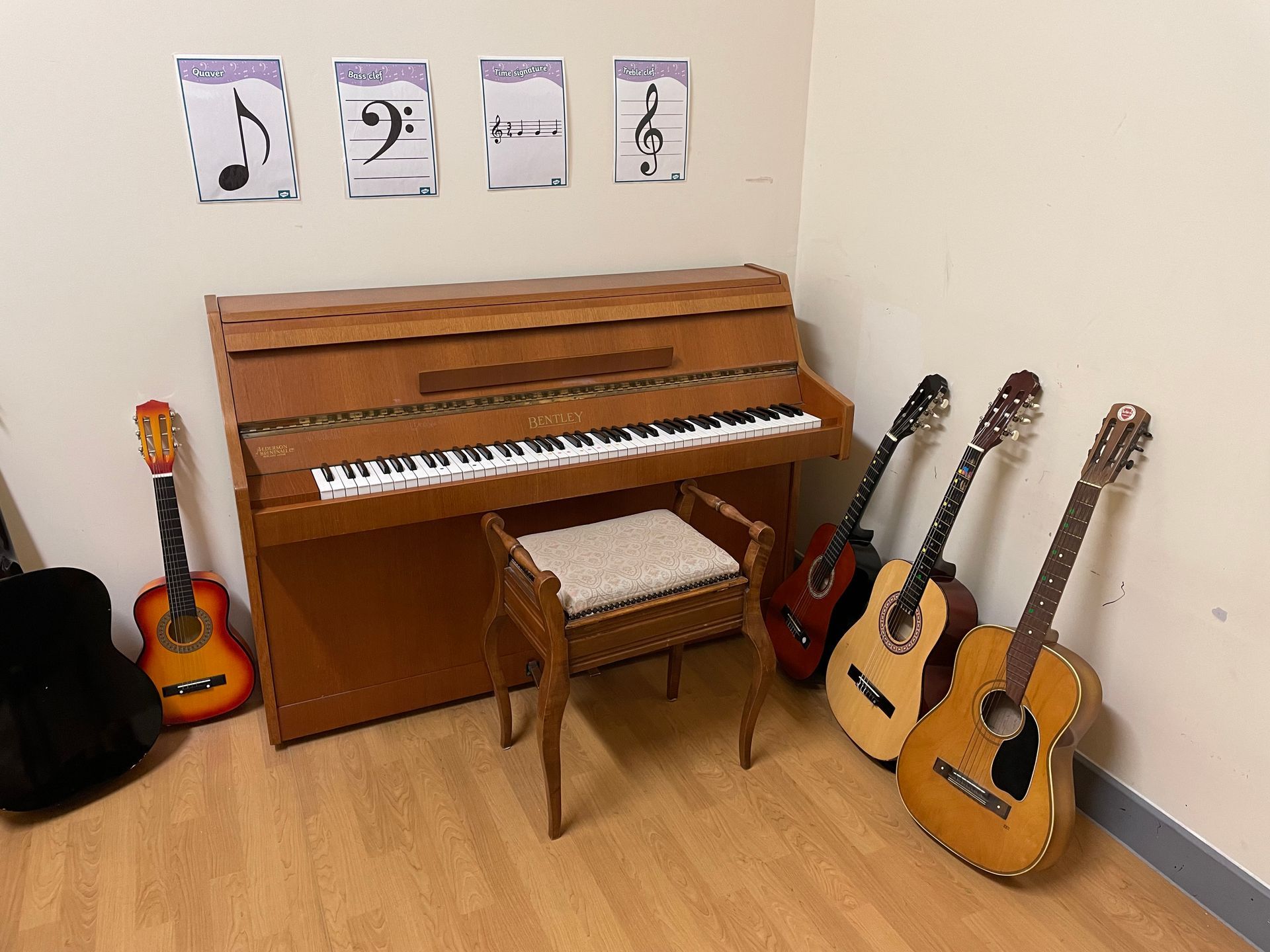Music

Intent
At Lace Hill Academy, we want to inspire a love of music and allow children to express themselves. We want our pupils to learn about different styles and genres of music, and be able to have the opportunity to compose music and play instruments. Our intent is for children to become musicians who can express themselves musically and feel confident to perform.
Our music curriculum is designed around five
substantive concepts (arrows pointing to the star):
- Performing
- Listening
- Composing
- History of music
- Interelated dimensions of music
Through our music curriculum, children are also exposed to disciplinary concepts (points on the star):
- Composing
- Performing
- Describing
- Practising
- Responding
This is how our children learn how to be successful musicians and achieve our intent below (also shown in the golden tail)
I am a Lace Hill musician because…
- I can identify the different musical notes
- I enjoy a variety of genres of music and can identify the different styles
- I feel confident to explore and play musical instruments including body percussion
- I can find and keep a steady beat
- I can listen and copy rhythmic patterns
- I can take part in a performance in front of an audience
- I can express myself through music
- I can discuss a piece of music and its different elements
Implementation
At Lace Hill Academy we use a primary scheme called Kapow to support teaching and learning in music. In Years 4, 5 and 6, each class has a term's worth of lessons delivered by a specialist music teacher to learn a musical instrument. Learning and appreciating music runs though the school, with singing and exploring instruments in Early Years, leading to learning a variety of music including ukuleles, clarinets and glockenspiels in Key Stage Two.
Impact
At Lace Hill Academy, our aim is for our music curriculum to develop our children so that they enjoy a wide range of music, discuss a piece of music and identify different notes. They need to be able to express themselves using music, keep a steady beat, play musical instruments, copy rhythmic patterns and perform in front of an audience. We measure the impact of our music curriculum through monitoring work in floor books, pupil voice, by taking learning walks and termly data analysis.

List of services
-
How is your child assessed?Item link List Item 3
At the end of each unit, the children complete a POP (proof of progress) task, which enables their class teacher to continually measure and monitor progress within the Year Group Assessment statements.
-
How do we provide other musical opportunities at Lace Hill Academy?Item Link
Children take part in regular singing assemblies where they are introduced to singing different types of music and throughout the year have opportunities to perform in front of parents and friends.
Children are also able to have individual guitar, ukulele and keyboard lessons which are organised through Bucks Learning Trust or Bittersweet Music http://www.bittersweetmusic.co.uk
Children in Years 4, 5 and 6 have musical instrument lessons taught by a specialist music teacher weekly over a term.
Children also have the opportunity to be part of the school choir who perform at Young Voices at the Birmingham World Resorts Arena.
Address:
Catchpin Street
Buckingham
MK18 7RR

All Rights Reserved | Lacehill Academy | Privacy Policy


